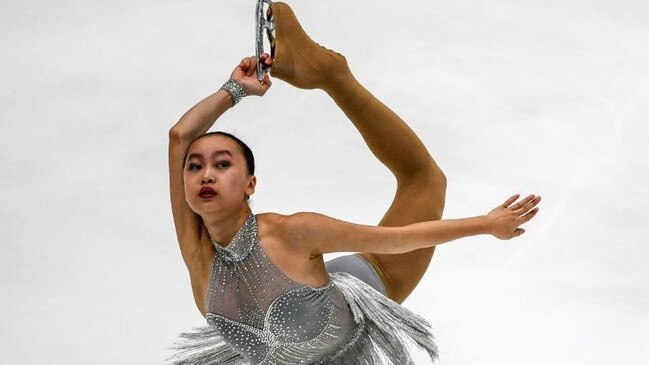Cold, slippery and unyielding, ice is a lethal surface to play sports on. Even the best skaters get badly hurt when they fall; broken bones, cuts, fractured skulls and concussions. The worst head knocks can be deadly; some instant, others much later.
“Just one visit to the hospital for concussion and the suicide risk goes up years and decades,” US neuroscientist Dr Chris Nowinski said in an interview.
Nowinski says there’s a clear link between concussion, epilepsy and suicide but Dr Peter Braun, the chief medical officer at the Olympic Winter Institute of Australia (OWIA), isn’t convinced.
“To my knowledge, there is no evidence to support such a link. Anecdotal reports and case series exploring a potential connection are subject to a number of errors,” he said.
As The Australian and The Daily Telegraph exclusively revealed, Katia Alexandrovskaya suffered multiple concussions from a young age as well as numerous seizures and was eventually diagnosed with epilepsy last January. She took her own life in July.

Neuroscientists have been warning sporting organisations for years about the effects of traumatic head injuries and most have got the memo.
Prize fights are now stopped the instant a punch-drunk boxer’s legs turn to jelly.
Footballers are dragged straight from the field to be assessed the moment they get whacked and if they can’t remember the Prime Minister’s name or what day of the week it is, they can’t go back on.
Ice hockey, the most macho winter sport of them all, won’t let anyone - players and referees included - even step on an ice rink without wearing a safety helmet.
The same applies in speed skating and snowboarding and bobsleigh and pretty much every other sport played at the Winter Olympics, with one glaring exception.
There are no helmets worn by figure skaters.
The tiny teenage girls who dominate the sport wear skimpy costumes, mini skirts that expose their briefs and inner thighs, lipstick, fake eyelashes and nail polish but not protective headgear.

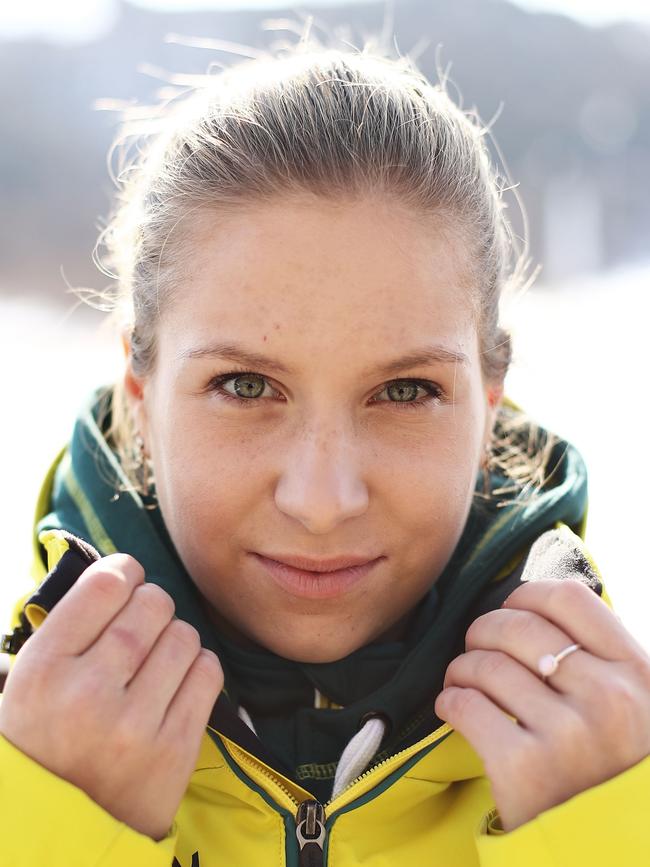
No mouthguards, either. No padding. Not in competition. Not even in training.
The International Skating Union’s rules on what competitors are allowed to wear on the ice are curiously vague.
Long trousers are compulsory for male skaters while female skaters are warned against “excessive nudity” but protective head gear is not regulated.
Figure skaters can wear helmets if they choose but the ISU President Jan Dijkema was noncommittal when asked if they should be mandatory.
“The ISU safety policy is continuously under evaluation,” he said
Dr Nowinski said the rules were absurd. “Tradition is a terrible reason to give children brain injuries,” he said.
“The value of a prevented concussion is immeasurable because we’re talking about people’s lives, we’re talking about the quality of their lives, even if it doesn’t take their life.”
Figure skating has always been box-office gold for television broadcasters but child protection groups say the dress-to-impress culture sexualises and exploits young competitors instead of prioritising their health.
Olympic champions make everything look so graceful and effortless after years perfecting the complex jumps and rotations that impress the judges but the physical toll and health risks they face are real.
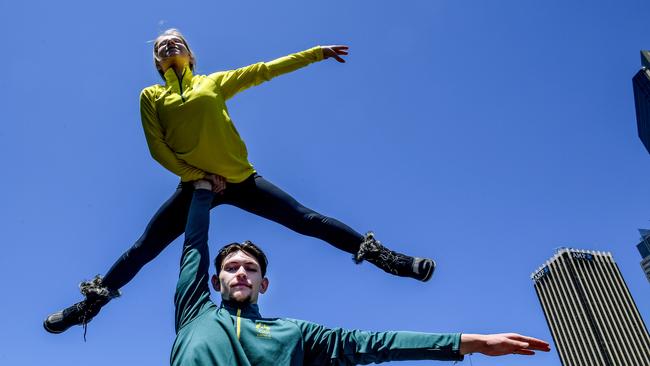
When skaters spin, they turn so fast that blood rushes into their heads, causing nosebleeds and bursting tiny vessels in the whites of their eyes that the television cameras don’t show.
When they jump, they generate forces up to five times their natural body weight, putting enormous strain on their ankle, knee and hip joints, making falls even more hazardous.
The layer of ice that skaters compete on doesn’t allow for soft landings because it is just five centimetres thick and hiding a slab of concrete embedded with metal pipes that help with refrigeration.
In 2014, the devastating effects of head knocks were laid out for everyone to see when Japan’s teenage Olympic champion Yuzuru Hanyu was involved in a sickening collision while warming up for a competition in China.
He lay motionless on the ice, which was stained red by the blood seeping from a head gash, before being taken to a medical centre so doctors could stitch up his jaw and close his wounds with a stapler.
A quarter of an hour later, he was back on the ice, protected by nothing more than an elastic bandage, but was still so groggy he fell five times.
The response from skating officials to the outcry that followed was telling: ‘nothing to see here.’
Alexandrovskaya’s death has been met by the same deafening silence.
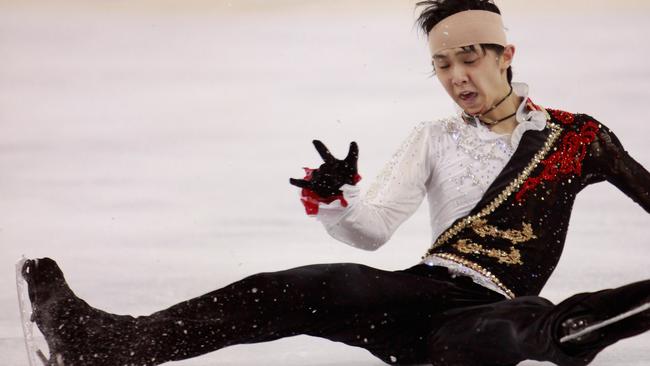
Dr Nowinski says her symptoms bore all the hallmarks of chronic traumatic encephalopathy but the degenerative brain disease can only be diagnosed through autopsy and there’s never been a study allowed on the brain of a figure skater.
No-one kept count of the number of times Alexandrovskaya hit her head on the ice but multiple sources have told The Australian and The Daily Telegraph she experienced multiple concussions and were present when she filled out a concussion report form for the New South Wales Institute of Sport.
Dr Braun says the OWIA has never been notified formally about any concussions to skaters in their programs.
“I can advise that our figure skating program (dating back to 1999) has not given rise to any incidents of concussion in training, competition, or other non-sport-related activities undertaken by figure skaters supported by us,” he said.
The OWIA has some of the strictest protocols in the world for the management of concussion but privacy laws and the code of silence and stigma around head injuries indicates not all cases are reported.
Olympic aerials champion Lydia Lasilla said she suffered five concussions throughout her career and the OWIA was always “very careful” in managing her injuries.

“For example if I had a head knock and saw stars, it was a minimum of seven days off and you could only return to sport if your COG sport results were the same as your baseline or better.”
The five-time Winter Olympian said there was also “a bunch” testing of the cardiovascular system and balance.
“It was still very scary to go back and jump, you would think; ‘I think I am OK after my test’ but you do have that hesitation...I know with my team, particularly when your head knocks a lot, that we took it really seriously.”
While she felt well looked after, she said she saw athletes she competed against retire early because of concussions, and ongoing headaches and vertigo resulting from them.
“Really significant stuff,” she said. “It’s really serious.
“I have seen other countries not manage it well, I have seen athletes take a really big hit and their coach has sent them straight back up...it’s pretty scary.”
HORRIFYING ABUSE HIDDEN BEHIND SKATING GLAMOUR
The physical and emotional scars inflicted on young female ice skaters don’t just disappear when they quit the sport. Victims often suffer in silence, battling depression and serious eating disorders for years, or face fresh harassment if they speak out. Inspired by the hundreds of young girls who came forward to expose the shocking extent of abuse in gymnastics, Jessica Shuran Yu chose to shine a light on figure skating’s dark secrets.
A talented Singaporean skater who was sent to China to train, she went public with chilling revelations about how she was repeatedly hit, kicked and body-shamed by her Chinese coach from the age of 11.
Now retired from the sport and studying in New York City, the 20-year-old spoke exclusively to The Australian and The Daily Telegraph about the mixed feedback she’s received.
She said she’s been heartened by the flood of supportive messages she’s had from the public and the private exchanges she’s had with other skaters thanking her for taking a stance.
But no one from the International Skating Union has reached out to her and the response she got from China – the host of the next Winter Olympics in 2022 – is deeply disturbing.
“I don’t want to make this a problem about one country because it’s a global issue but in the country and environment I was in, it’s so normalised yet people are so aware it’s happened,” she said.
RELATED NEWS
Brutal reality of a system that failed our adopted Olympian
Teenage athlete trading clsoe to human trafficking
Funding cut left troubled Olympian broke and hungry
“It’s strange because it was consistently justified to me. The stuff I described in my post, the hitting, the kicking, the yelling, the insults, it happened in front of everyone yet no-one batted an eye.
“Yet, I think on some level they knew that it was wrong because it was never done at competitions, it was never done when we were abroad, it was never done when we were training within the United States, it was only when we were at the rink that we were at that it was done in front of everyone.
“I genuinely believe my ex coach and anyone else who is an abuser or who supports abusers that they genuinely believe that it’s effective and it’s necessary, that they’re doing it for your own sake. It was told to me that this is for your good.
“In fact, someone who I knew from that rink, after I posted, ended up saying to me, commenting that ‘you should be grateful because that was his way of showing love’ and that’s really messed up.”
If that sounds familiar, it’s because it’s the same terrifying message that so many young gymnasts have disclosed after coming forward.
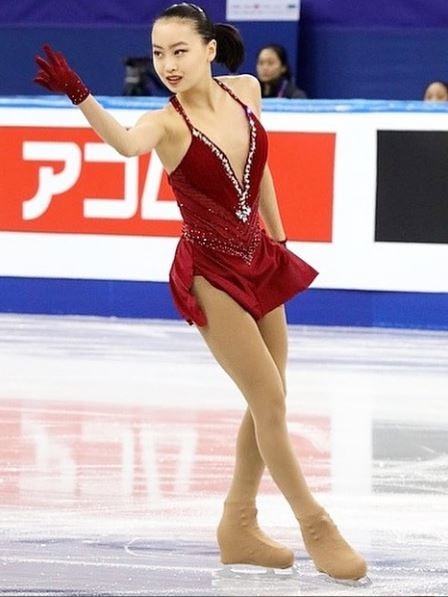
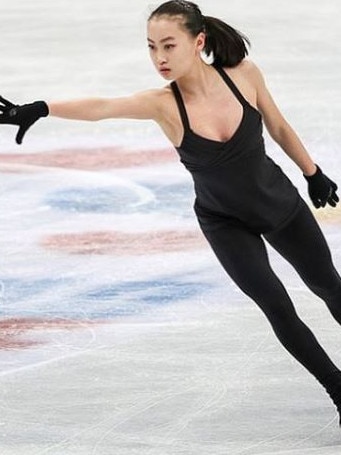
The abuse and culture of fear that exists in gymnastics is just as widespread in figure skating.
More than 20 coaches that worked for the French ice skating federation after currently under investigation for alleged offences stretching back over decades after champion French skater Sarah Aboitbol accused her former coach of raping her in the 1990s.
One of America’s most decorated coaches, Richard Callaghan, has been served with a $10 million lawsuit from Craig Maurizi, an Olympic hopeful who claims he was groomed for a decade of sexual abuse.
Two weeks before naturalised Australian skater Katia Alexandrovskaya fell to her death, another Russian female ice skater revealed she wanted to throw herself off a roof because the sport had left her physically and emotionally wrecked.
JESSICA’S BRAVE POST
Betina Popova’s neck is permanently damaged, one of her fingers remains half bent because she sliced a tendon, she injured both her Achilles’, smashed a knee, broke both her wrists and was concussed four times in the year before she retired.
But that wasn’t what pushed her to the edge; it was from constantly being told by her coaches that she was fat.
“Something broke in my head back in childhood and was no longer repaired,” she explained.
Body shaming is one figure skating’s worst kept secrets because no-one is spared.
While male competitors are encouraged to be tall and strong so they can lift and throw their female partners, females are pressured into staying small and light so they can perform more spins when they’re flung into the air.
So, they starve themselves.
Yulia Lipnitskaya was proclaimed as the sport’s new princess when she won gold at the 2014 Sochi Winter Olympics, at age 15, performing the role of the doomed girl in the red coat from Schindler’s List.
Feted by the Russian President Vladimir Putin himself, the pressure on Lipnitskaya to stay skinny was so overwhelming that she stopped eating.
Three years later, she checked herself into an Israeli clinic suffering from anorexia and has never skated again.
Maria Sotskova competed at the 2018 PyeongChang Winter Olympics at 17. Born three months after Alexandrovskaya, she dropped out of the sport last month, saying she was “ashamed of myself.”
“From the outside, we are successful, healthy and, I would like to note, beautiful and slender,” she wrote on her Instagram account.
“But not for ourselves, we see ourselves through the prism of what we have been instilled during our whole life – fat, lazy, incapable of anything, haven’t achieved nothing.”
Gymnastics Australia has engaged the Australian Human Rights Commission to conduct an independent review into the “culture and practices” of the sport after dozens of high-profile former gymnasts came forward alleging they were abused.
There are currently no plans to investigate figure skating because local authorities say they have not received any reports alleging abuse, although sources have told The Australian and The Daily Telegraph they have witnessed young female skaters being intimidated.
It was an open secret that Alexandrovskaya had been battling alcohol dependency and had experienced blackouts and seizures but Australian Olympic Committee chief executive Matt Carroll said authorities can only investigate complaints if they are reported.
“How do we educate athletes and others, friends and family, to be able to make a complaint or an allegation that they believe that they need to do,” Carroll said.
“That would be something that we could add to, and educating the sports administrators to ensure that that occurs and that people feel safe enough to make an allegation without feeling that they’re going to have some other measures taken against them.”
